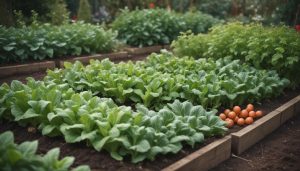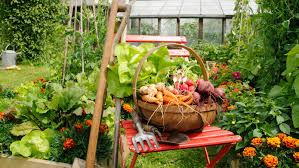Smart Home Gardening Ideas That Can Transform Your Space
Daniel Fisher August 21, 2025
Explore practical and innovative smart home gardening ideas designed to help everyday enthusiasts upgrade their green spaces. This guide covers trending indoor plant care, vertical gardening, sustainable solutions, and how technology is changing the way people garden at home for healthier, thriving results.
Rediscovering Indoor Plant Care for a Greener Home
Indoor plant care continues to be a high-demand topic among home gardening enthusiasts. Whether you have a single pothos or a whole wall of succulents, understanding the specific light, water, and soil needs of your plants is vital for long-term success. A common challenge people face involves finding the right location for plants, as some species thrive in direct sun while others prefer diffused light. Smart home gardening now incorporates LED grow lights and automated watering systems, creating flexible solutions in any room. Recent trends indicate that integrating technology with nature not only sustains plant health but also enhances the overall ambiance of living spaces. A boost in indoor air quality and the calming presence of greenery can transform one’s environment and well-being.
Beyond aesthetics, indoor plants offer genuine benefits for emotional wellness and air purification, as shown in studies tracked by universities and environmental organizations. Smart indoor gardening tools, such as soil moisture meters and smartphone sensor apps, help people monitor their plants’ condition with precision. For those new to home gardening, starting with low-maintenance options like snake plants or spider plants can provide confidence and visible results quickly. Incorporating plant care into your daily routine—by setting reminders for watering or fertilizing—helps build consistent habits, further increasing the plants’ chance of survival and growth.
Including children and family members in indoor gardening can add an educational element, involving everyone in responsibility and observation. The choice of planters, from self-watering pots to hanging baskets, can dramatically affect both moisture retention and visual appeal. As people become more interested in health and sustainability, the demand for toxin-free and recyclable plant containers grows. Online communities dedicated to smart home gardening share creative indoor plant setups and troubleshooting tips, ensuring that even beginners have access to helpful resources and a supportive network.
Vertical Gardening: Maximizing Space and Creativity
Vertical gardening, an increasingly popular gardening solution for small spaces, leverages walls, fences, or specially designed structures to grow a lush array of plants. This approach enables people in apartments or homes with limited yard area to cultivate vegetables, herbs, or flowers. Systems such as vertical planters, living walls, and pocket gardens are widely available, and many are compatible with smart irrigation and lighting. The use of vertical gardening opens creative opportunities for combining decorative design with productive gardening, making it suitable even for balconies or indoor corners. Innovation in material technology also means many systems are lightweight, modular, and easy to install.
Urban gardeners often find vertical gardens especially helpful for urban air quality improvement and aesthetic enhancement. Smart garden systems now automate watering and nutrient delivery across multiple tiers, ensuring even coverage for all plants. Edible crops like lettuce, mint, or strawberries can be grown indoors year-round, providing easy-access ingredients for home cooking. When designing a vertical garden, gardeners frequently select a combination of trailing, climbing, and compact species to maximize both coverage and productivity while reducing pest issues. Integrating vertical gardening supports biodiversity by providing micro-habitats for pollinators and beneficial insects.
When planning a vertical garden, structure and maintenance are key considerations. Selecting sturdy frames and ensuring proper drainage prevents water damage to walls or floors. Regular checks for airflow and sunlight are crucial, as vertical gardens can sometimes overshadow lower plants if not properly spaced. Gardeners are finding success with smart garden monitors that track temperature, humidity, and moisture for each section of the wall, optimizing plant care routines and keeping vertical spaces flourishing throughout the year. By blending creativity with functionality, vertical gardening continues to attract a wide range of enthusiasts.
Sustainable Gardening Practices for the Eco-Conscious Home
The shift toward sustainable gardening at home is gaining traction, with homeowners seeking ways to reduce resource use while still enjoying a thriving garden. Techniques such as composting kitchen scraps, harvesting rainwater, and using organic fertilizers can reduce ecological impact. Composting, in particular, transforms food waste and plant clippings into nutrient-rich soil, supporting plant growth without synthetic chemicals. Recent guides from environmental authorities emphasize the importance of native plants, which are naturally more water- and pest-resistant, making them suited to local ecosystems and reducing maintenance needs.
Eco-minded gardeners are deploying mulch, companion planting, and integrated pest management to promote a balanced home garden ecosystem. Mulch reduces soil evaporation and suppresses weeds; it also regulates soil temperature, crucial for roots. Companion planting—grouping certain species together—helps naturally ward off pests, reducing the need for pesticides. Many smart garden kits now offer features that alert gardeners to optimal times for watering or pest checks, supporting preventative care and sustainability by limiting resource use.
Moreover, sustainable gardening is about choosing materials with a minimal carbon footprint. Recycled and biodegradable pots, as well as rainwater collectors, are increasingly common among eco-conscious gardeners. Participation in community gardens also promotes local food production, reducing the impact of transportation. Gardening sustainably enhances property value, builds community resilience, and provides a sense of accomplishment that aligns with contemporary environmental values. Sustainable home gardening melds beauty, productivity, and responsibility in a housing landscape increasingly shaped by climate awareness.
Smart Technology and Automation in Home Gardens
Home gardening is experiencing a revolution driven by smart technology and automation. Innovative devices such as app-controlled irrigation systems, smart plant sensors, and automated grow lights empower gardeners of all levels to optimize care without constant supervision. These systems track crucial variables like soil moisture, temperature, and sunlight, syncing data with mobile devices to provide real-time feedback. By automating routine care tasks, people can maintain lush gardens even with busy schedules.
For those embracing high-tech gardening, the benefits extend beyond convenience. Smart hydroponic systems—compact, soil-free setups ideal for herbs and leafy greens—operate indoors year-round, requiring minimal manual input. Settings like nutrient levels or lighting duration can be tailored remotely, supporting healthy, predictable yields. These innovations are ideal for urban or small-space dwellers eager to maximize output without a yard. Tech-integrated gardening also supports sustainability by minimizing water usage and eliminating runoff, which is noted by environmental engineers and gardening experts alike.
Adoption rates for smart gardening tools are rising as households seek efficient, sustainable solutions. Models featuring AI-driven recommendations personalize care instructions for specific plant types, enhancing user confidence and plant survival rates. Integration with virtual assistants, such as those in smart speakers, allows command-based watering or light adjustment—a helpful feature for mobility-impaired gardeners. By combining monitoring, automation, and personalization, these technologies are reshaping modern gardening practices from the ground up.
Designing Outdoor Spaces for Wellness and Biodiversity
Outdoor home gardens are increasingly designed with both wellness and biodiversity in mind. While the aesthetics of flower beds remain popular, more gardeners are choosing layouts that encourage relaxation, play, and wildlife support. Native plant gardens, pollinator pathways, and dedicated sensory zones enhance mental health and invite beneficial birds, bees, and butterflies. According to horticultural studies, gardens that incorporate habitat elements—such as logs, water bowls, or flowering shrubs—dramatically increase backyard biodiversity.
Wellness gardening emphasizes creating tranquil atmospheres that foster mindfulness and reduce stress. Features might include winding paths, shaded seating areas, fragrant herbs, and water features that attract songbirds or frogs. Research from prominent design institutes highlights the positive impact of green spaces on physical health, including lower blood pressure and improved immune function. When outdoor spaces include edible components, such as fruit trees or vegetable patches, the link between gardening and healthy eating habits grows even stronger.
Biodiversity also plays a crucial role in sustainable landscape design. By planting a variety of species that bloom at different times, gardeners ensure a season-long source of nectar for pollinators. Companion plantings reduce pest outbreaks naturally, and planting trees provides shade that protects both people and understory plants. Smart irrigation and rainwater harvesting systems can be integrated into outdoor spaces to further support environmental goals. Ultimately, designing with biodiversity and wellness in mind paves the way for future-ready, resilient, and enjoyable home landscapes.
Connecting with the Home Gardening Community for Lasting Results
Home gardeners benefit enormously from connecting with community networks, online forums, or local clubs. These groups offer knowledge-sharing, troubleshooting assistance, and inspiration for new projects. Popular platforms now feature real-time plant identification, disease diagnosis, and advice exchange, making it easier than ever to learn about regional gardening challenges and successful solutions. The sense of community encourages experimentation, helping individuals overcome setbacks and celebrate successes together.
Community gardens, seed exchanges, and neighborhood composting initiatives offer opportunities to collaborate on sustainability goals. These shared efforts widen access to gardening resources and foster a spirit of environmental stewardship. Learning from seasoned enthusiasts gives less experienced gardeners insights that aren’t always found in books or product manuals. Participating in gardening workshops and plant swaps allows individuals to discover new species and techniques adaptable to their unique home environments.
Long-term engagement with gardening communities builds a knowledge base that supports lasting garden health and personal satisfaction. It also enables gardeners to stay updated with trends in organic gardening, climate-adapted varieties, and smart technology. The mutual encouragement and accountability increase the chances of sticking to gardening routines year-round. Ultimately, collaboration within the gardening community ensures that new advances and time-tested wisdom are passed along, keeping the home gardening movement vibrant and progressive.
References
1. American Society for Horticultural Science. (2022). Benefits of indoor plants for urban living. Retrieved from https://ashs.org/page/IndoorPlantsBenefits
2. Royal Horticultural Society. (2023). Sustainable gardening advice. Retrieved from https://www.rhs.org.uk/sustainability
3. United States Environmental Protection Agency. (2021). Creating healthy indoor environments with plants. Retrieved from https://www.epa.gov/indoor-air-quality-iaq/indoor-plants
4. University of Florida IFAS Extension. (2022). Vertical gardening for small spaces. Retrieved from https://edis.ifas.ufl.edu/publication/EP480
5. Cooperative Extension System. (2023). Smart gardening with technology. Retrieved from https://extension.org/smart-gardening
6. National Wildlife Federation. (2023). Gardening for biodiversity and wellness. Retrieved from https://www.nwf.org/Garden-for-Wildlife






